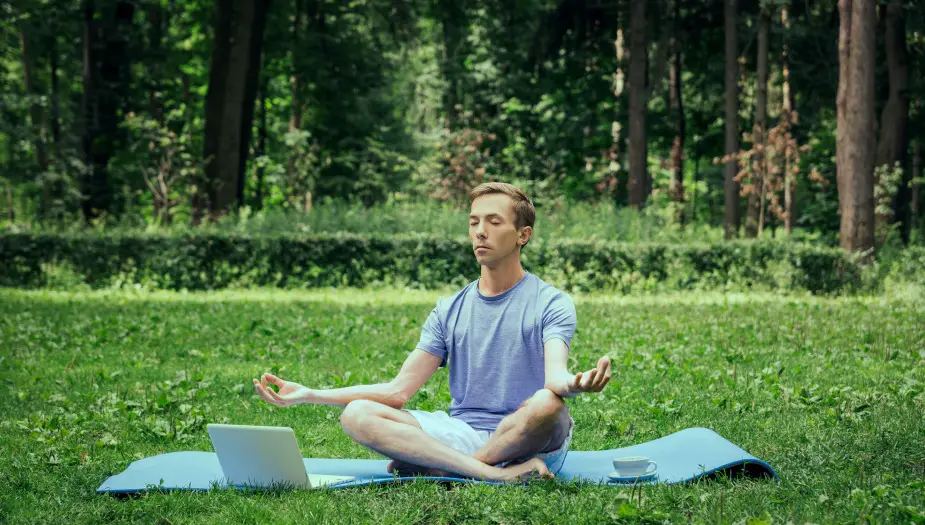Studies have suggested that green has a calming effect on people, but is it really true? In this blog post, we dive into the science behind green and explore its potential to soothe the nerves.

There’s a reason why spas and meditation centers often use shades of green in their decor – this color is believed to have a calming effect on people, making them feel more relaxed and at ease.
But is it all just a myth, or is there some truth behind this theory? As marketing geniuses specialized in color psychology, we’ve decided to take a closer look at the science behind the soothing powers of green, and share our findings with you.
What is Color Psychology?
Definition of Color Psychology
Color Psychology is the study of how colors affect human behavior, mood, and emotions. Colors can evoke a wide range of emotions and reactions, and they play a critical role in influencing our choices and decision-making.
The Role of Color in Human Behavior
Colors can significantly impact our perceptions, actions, and behaviors. For example, red is often associated with passion and urgency, while blue is commonly associated with calmness and trust. Colors can also be used to create a specific mood or atmosphere in a space or setting. Understanding the psychology of color is crucial for marketers and designers who want to influence people’s behavior and reactions.
What is Green?
History and Symbolism of Green
Green has a rich history and symbolism across cultures. In ancient Egypt, green was associated with fertility and rebirth, while in European cultures, green was linked to nature and the outdoors. In modern times, green is often associated with environmentalism and sustainability, while also representing balance and harmony.
Shades of Green and their Meanings
Various shades of green can evoke different emotions and meanings. For example, light green can signify renewal and growth, while darker greens may represent wealth and stability. Olive green conveys peace and tranquility, while neon green can convey excitement and energy. It’s important to consider the specific shade of green used in branding or design to ensure it aligns with the intended message and emotions.
Green and the Brain

The Science Behind Color Perception
The human brain processes color through a complex system involving various cells and receptors in the eye. Different wavelengths of light translate into different colors by triggering specific receptors in the brain. This system plays a role in how we perceive and react to different colors.
Green’s Connection to Serenity and Relaxation
Multiple studies have suggested that green has a calming effect on the mind and body. Green spaces such as parks or gardens have been shown to reduce stress levels and improve mental health. The brain may interpret green as a signal of safety and relaxation due to its association with nature.
The Role of Melatonin in Sleep and Relaxation
Melatonin, a natural hormone produced by the pineal gland, is involved in regulating the sleep-wake cycle and promoting relaxation. Exposure to natural green light may stimulate the production of melatonin, leading to a sense of calmness and relaxation. This can explain why spending time in green environments can have a calming effect on people.
In the following sections, we will dive deeper into the effects of green on mood and emotions, and explore ways to incorporate green into our daily lives.
Green’s Effect on Mood and Emotions
Studies on the Effect of Green on Stress Levels
Studies have shown that exposure to green spaces can significantly reduce stress levels and improve mood. For example, one study found that participants who were shown pictures of green landscapes experienced a reduction in stress levels compared to those who were shown urban scenes. Another study found that workers who had access to green spaces during their lunch breaks reported feeling less stressed and more productive.
The Benefits of Green Spaces for Mental Health
Green spaces such as parks, gardens, and forests have been found to have numerous benefits for mental health. Spending time in nature can improve mood, reduce anxiety and depression, and improve cognitive function. Green spaces can also encourage physical activity, leading to further mental health benefits.
Personal Experiences with Green and Calmness
Many people report feeling a sense of calmness and relaxation when surrounded by green environments. This could be due to the association of green with nature and safety, as well as the potential physiological effects on the brain and body. Personal experiences with green can vary, but many people find that incorporating green into their daily lives can improve their mood and reduce stress.
How to Incorporate Green into Your Life

Green in Interior Design and Home Decor
Incorporating green into interior design and home decor can create a calming and refreshing atmosphere. Adding plants or green accents such as pillows or curtains can add a pop of color and improve air quality. Different shades of green can create different moods and atmospheres, from earthy and natural to bright and energizing.
Green in Fashion and Personal Style
Green clothing and accessories can make a statement while also promoting a sense of calmness and serenity. Dark greens such as emerald or forest can provide a rich and sophisticated look, while lighter greens such as mint or sage can create a playful and refreshing vibe. Incorporating green into personal style can be a simple way to promote a sense of calmness and relaxation on a daily basis.
Green in Marketing and Advertising
Marketers and advertisers can use green to evoke a sense of calmness, relaxation, and safety in their messaging. Green can also be used to promote sustainability and environmentalism, appealing to consumers who value these principles. However, it’s important to use green in a way that aligns with the intended message and emotions, as different shades of green can have different meanings.
Does Green Really Calm People?
The science behind the calming effects of green is complex and multifaceted. While there is evidence suggesting that green can have a calming effect on people, personal experiences and individual differences can also play a significant role.
Incorporating green into our daily lives through nature exposure, interior design, personal style, or marketing can potentially promote calmness and relaxation.
As marketing geniuses specialized in color psychology, we believe that understanding the science behind color perception and psychology can provide valuable insights in marketing and advertising. So, go ahead and add some green to your life, and see if it helps you feel more relaxed and at ease!
